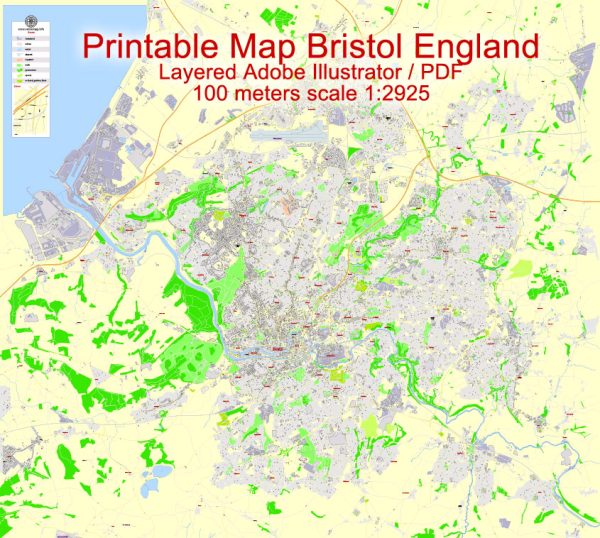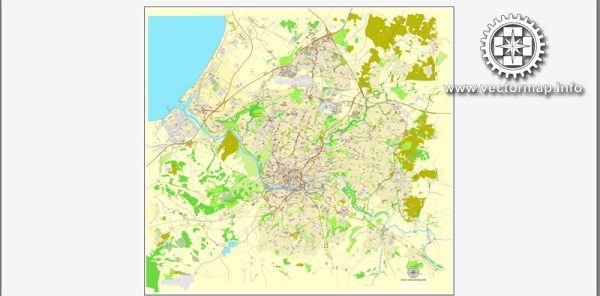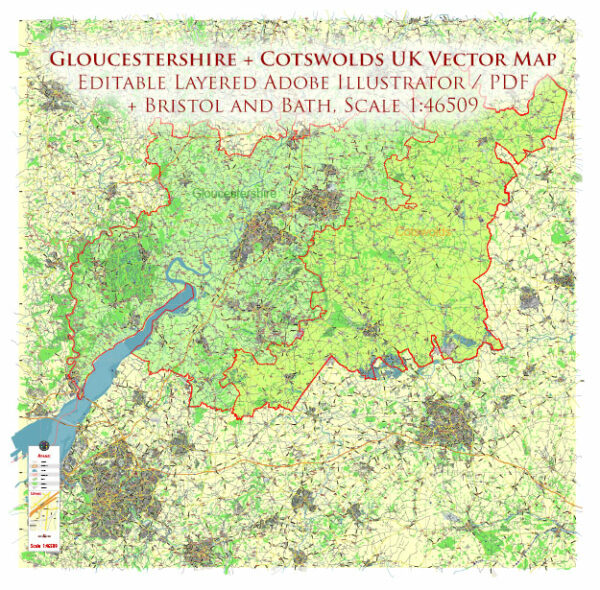The history of urban development in Bristol, United Kingdom, is a fascinating story that spans centuries and reflects the city’s growth, transformation, and evolution. Here is an overview of Bristol’s urban development:
- Medieval Bristol:
- Bristol’s history as a city dates back to the 12th century when it was granted a royal charter by King Stephen. The city’s port, situated on the River Avon, played a vital role in trade and commerce during this period.
- The city’s medieval layout featured narrow, winding streets, and its economic activity was centered around the harbor. St. Mary Redcliffe Church, a Gothic masterpiece, was constructed during this time and remains a prominent landmark.
- Tudor and Stuart Periods:
- During the Tudor and Stuart eras, Bristol continued to prosper as a trading hub. The city’s merchants engaged in the slave trade, the importing of tobacco, and other colonial ventures.
- The Old City, with its historic buildings and marketplaces, reflects the architectural styles of this period.
- Industrial Revolution:
- The 18th century brought the Industrial Revolution to Bristol, which had a profound impact on the city. It became a center for shipbuilding, manufacturing, and industry.
- The construction of the Floating Harbour, an innovative engineering project led by Isambard Kingdom Brunel and William Jessop, allowed the city to accommodate larger ships and further enhanced its role as a trading port.
- Victorian Era:
- The Victorian era saw substantial growth in Bristol, with the expansion of the railway network and the development of new residential areas. Bristol Temple Meads, a major railway station, was constructed during this period.
- The city’s architecture from the 19th century reflects the grandeur and opulence of the time, with ornate buildings and terraced houses.
- 20th Century:
- Bristol faced significant challenges during World War II when it was heavily bombed by the Luftwaffe. This led to the rebuilding of parts of the city in the post-war years.
- Urban renewal projects in the mid-20th century brought changes to the city’s landscape, including the development of the Broadmead shopping district and the construction of new residential areas.
- Contemporary Bristol:
- In recent decades, Bristol has continued to evolve as a vibrant and culturally rich city. It has seen the redevelopment of the Harbourside area into a cultural and commercial hub, with museums, galleries, and modern apartments.
- The city’s commitment to sustainability and the environment is reflected in initiatives like the Bristol Green Capital Partnership.
- Contemporary Challenges:
- Bristol, like many other cities, faces challenges related to urban planning, affordable housing, transportation, and social inequality. The need to balance development with the preservation of historic sites and green spaces is an ongoing concern.
Bristol’s history of urban development showcases its resilience and adaptability over the centuries. The city’s rich heritage, architectural diversity, and cultural vibrancy make it a unique and dynamic place to explore and experience.




 Author: Kirill Shrayber, Ph.D.
Author: Kirill Shrayber, Ph.D.